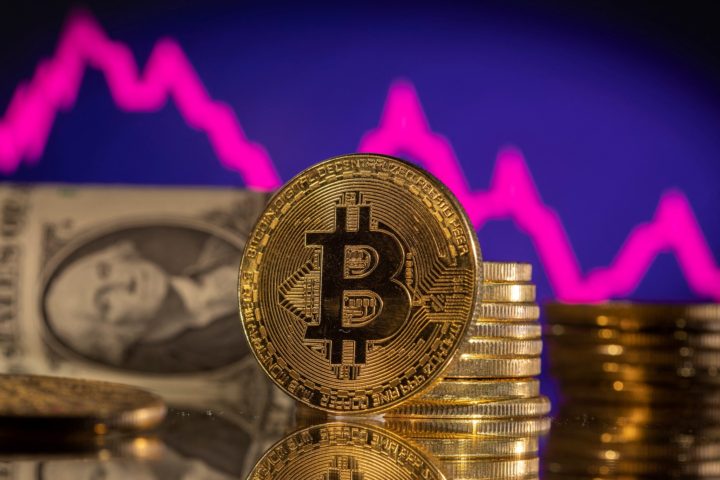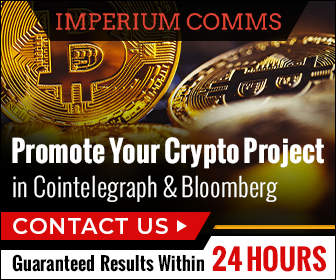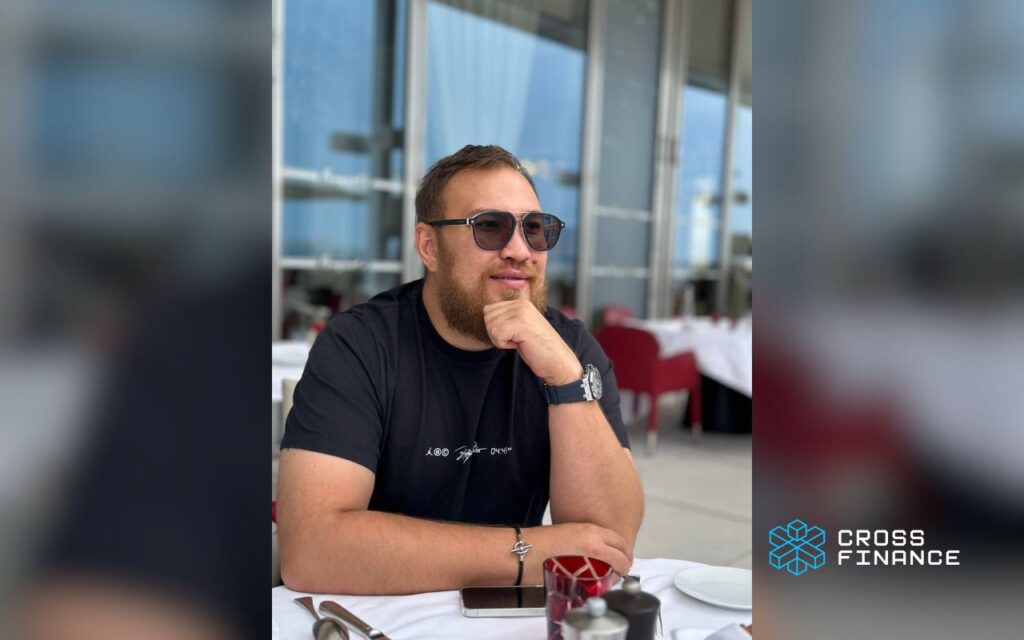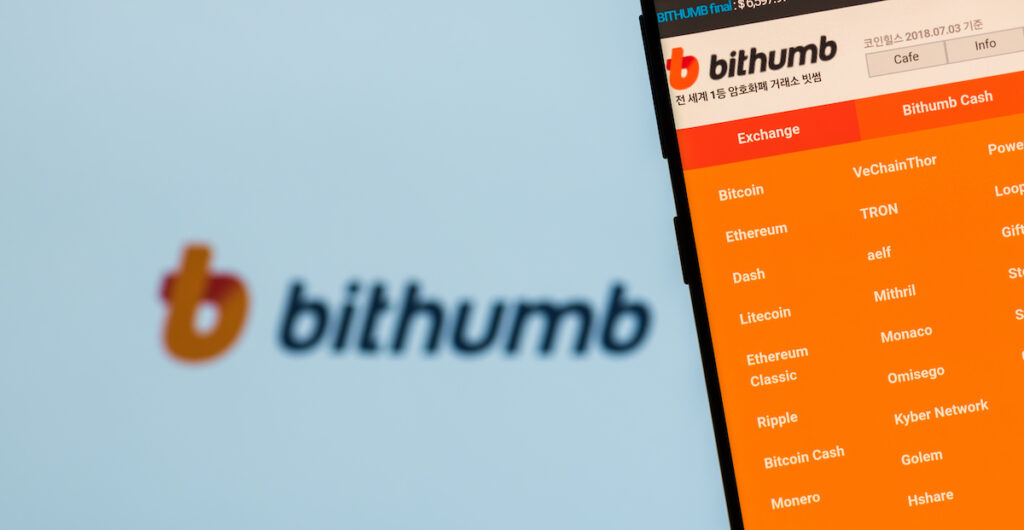Creditors of the now-defunct Mt. Gox Bitcoin exchange, which suffered a devastating hack in 2014 resulting in the loss of 850,000 BTC, have received an encouraging email hinting at forthcoming repayments.
On November 21, Nobuaki Kobayashi, the trustee responsible for overseeing the estate of Mt. Gox, began sending emails to rehabilitation creditors, indicating the start of repayments.
According to the email circulating on social media, Kobayashi plans to initiate the first repayments in cash during 2023, with expectations of continuing into 2024.
However, specific timelines for individual rehabilitation creditors were not provided, citing the complexity of handling repayments for the large number of creditors with various types of claims.
This news coincided with the announcement of the redemption of trust assets on November 22.
The rehabilitation trustee disclosed the receipt of 7 billion Japanese yen (approximately $47 million) to finance the repayment of claims, leaving trust assets at 8.8 billion yen, roughly $59 million.
The trustee also affirmed ongoing preparations for base, lump-sum, and intermediate repayments.
The Mt. Gox community greeted these developments with mixed reactions. Some found the email from the Mt. Gox trustee cautiously promising, finally seeing progress after years of uncertainty.
READ MORE: BNB Skyrockets Over 7% Amidst DOJ’s $4 Billion Settlement Talks with Binance
However, others pointed out that the email only mentioned cash payments, whereas many victims of the Mt. Gox hack anticipated the return of substantial Bitcoin holdings.
Data from the Mt. Gox balance bot on X (formerly Twitter) indicated that the trustee holds 135,890 BTC in known addresses, valued at nearly $5 billion at the time of writing.
An additional 3,795 BTC (equivalent to $130 million) is held in unknown addresses, according to the Mt. Gox balance bot.
Some creditors acknowledged that while cash payments represent progress after a decade of waiting, they eagerly await the return of their Bitcoin holdings.
Additionally, the recent lawsuit filed by the United States Securities and Exchange Commission (SEC) against Kraken on November 21 caught the attention of the Mt. Gox community.
Kraken has played a significant role in the repayment process for Mt. Gox hack victims.
Concerns were raised about potential delays if Kraken were to face difficulties, leading to further delays in the repayment process.
Despite the newfound optimism within the Mt. Gox community, some remain skeptical due to the exchange’s history of failing to meet repayment deadlines.
Initially expected to complete repayments by October 2023, the trustee officially extended the deadline to October 2024 in September 2023.
The road to recovery for Mt. Gox creditors continues to be marked by uncertainty and anticipation.
The CEO of Binance, Changpeng “CZ” Zhao, is set to plead guilty to a felony charge as part of a settlement reached with the United States Department of Justice.
This agreement resolves both criminal and civil cases involving the cryptocurrency exchange.
Attorney General Merrick Garland made the announcement during a press conference on November 21st, revealing that CZ appeared in person in a U.S. federal court, despite residing outside the country.
The settlement, valued at $4.3 billion, will address “civil regulatory enforcement actions” involving various government departments, including the U.S. Treasury and Commodity Futures Trading Commission (CFTC).
Garland accused Binance of allowing criminals engaged in illicit activities to use the platform to move “stolen funds.”
He claimed that the exchange had only pretended to comply with U.S. federal laws by providing certain users with access to Binance, despite their connections to illicit funds.
As part of the settlement, Binance will be subject to monitoring, reporting requirements, and the filing of suspicious activity reports for past transactions.
Garland criticized Binance for prioritizing profits over the safety of the American people, stating, “Using new technology to break the law does not make you a disruptor — it makes you a criminal.”
READ MORE: National Bank of Cambodia Teams Up with Alipay to Enable Cross-Border Transactions
Treasury Secretary Janet Yellen announced that Binance would pay over $3.4 billion in penalties to the Financial Crimes Enforcement Network and approximately $1 billion to the Treasury’s Office of Foreign Assets Control. CFTC Chair Rostin Behnam disclosed that Binance would pay $2.7 billion in civil monetary penalties and disgorgement, while CZ would pay $150 million.
Former compliance chief Samuel Lin would also contribute $1.5 million to the proposed settlement, with the Justice Department crediting approximately $1.8 billion toward these resolutions.
In response to the settlement, Binance released a blog post on November 21st, expressing their satisfaction with reaching a resolution with U.S. authorities. They emphasized their commitment to user security and safety.
CZ announced his resignation as CEO, with Richard Teng, Binance’s global head of regional markets, taking over the position. CZ acknowledged his mistakes and expressed his belief that stepping down was in the best interest of the Binance community and himself.
He also asserted that Binance had not misappropriated user funds or engaged in market manipulation.
The indictment against CZ, filed under seal on November 14th, charged him with failing to maintain an effective Anti-Money Laundering program at the crypto exchange, in violation of the Bank Secrecy Act.
Court records related to charges against Binance and CZ remained sealed from November 14th to 21st.
While this settlement resolves many of the civil and criminal investigations into Binance, the exchange still faces a pending civil case with the U.S. Securities and Exchange Commission, which filed charges for securities law violations in June.
Breaking away from the standard focus on developers, the CrossFi Foundation unveils its visionary $50 million grant program. The initiative is designed to be inclusive, welcoming participation from all users within the Cross Finance ecosystem. In an interview, Alexander Mamasidikov, co-founder of Cross Finance, explains the motivations behind this move, sheds light on the strategic allocation of grants and reveals the eligibility criteria applied to grantees.
Question: In November, the CrossFi Foundation announced a large-scale grant program totaling $50 million. Who can apply for a grant and what needs to be done?
Answer: The CrossFi Foundation grant program targets all users of the Cross Finance ecosystem. It’s not limited to developers or technical experts; it is inclusive for everyone, including common users. The program is structured into four categories: common users, ambassadors, developers, and validators.
The eligibility criteria for receiving a grant vary depending on the user’s role in the ecosystem. For ordinary users, participation involves using ecosystem products, testing them, providing feedback, and sharing their experiences on social networks. Ambassadors need to have active social media accounts with a substantial follower base and create high-quality content about the ecosystem’s products. Developers seeking grants should be capable of creating services and tools on the CrossFi EVM-compatible blockchain. Validators can apply for grants to support the decentralized CrossFi Chain’s stability and robustness. Grants are awarded in native ecosystem coins, XFI and MPX.
Question: Are the volumes of grants in the four categories the same?
Answer: The grant program allocates the majority, approximately 75%, to development teams creating solutions based on CrossFi Chain. The remaining 25% will be distributed among three categories of grantees – users, ambassadors, and validators.
Question: What solutions do you expect to come to the ecosystem?
Answer: The range of expected solutions is broad, including bridges, swaps, lending protocols, farming and staking tools, DeFi protocols and services, oracles, and GameFi products. The goal is to expand the ecosystem and provide users with a diverse product selection. Development teams with finished products have an advantage, considering their experience, expertise, and community support. To receive a grant, teams must conduct an independent code audit and submit a security and decentralization report to the jury. The jury, currently comprising the CrossFi Chain developers’ team with extensive layer-1 blockchain experience, will evaluate all applications.
Question: If grants for developers are a very popular story in the blockchain industry, then grants for users are a rare phenomenon. Why did you decide to provide grants for ordinary users as well?
Answer: The Cross Finance product ecosystem aims to bridge traditional finance with the decentralized finance industry, making it accessible to a broad number of users in daily life. Recognizing that some users perceive cryptocurrencies as complex or separate them from traditional finance, the grant program seeks to address this gap through educational initiatives.
The goal is to illustrate the coexistence of traditional and decentralized financial approaches and demonstrate how they can complement each other. Ordinary users, being the primary audience, are encouraged to share their experiences and contribute to the ecosystem’s growth, fostering a better understanding of blockchain technology.
Question: $50 million is one of the largest grants in the blockchain industry over the past year. Do the goals of such grant programs justify it?
Answer: The CrossFi Foundation, as a non-commercial organization supporting Cross Finance, considers community as the main value and primary driving force of any decentralized system. The $50 million grant program aims to stimulate ecosystem development, encourage active community participation, and create a foundation for new products and services. The program emphasizes that users are not just consumers but also contributors to the ecosystem’s evolution. Grants have proven their effectiveness in fostering blockchain community engagement.
Question: Isn’t it easier to select a team of developers yourself and create the products the ecosystem needs? Wouldn’t it be cheaper?
Answer: The purpose of grant programs extends beyond product creation; it focuses on ecosystem and community development. Grant programs aim to attract DApp builders and professional developers with their own communities. These development teams, by launching decentralized applications on the CrossFi blockchain, introduce the capabilities of the CrossFi Chain to their audience, thereby increasing onchain activity and liquidity. Grant programs harness the collective force of the audience, a key driving factor in the blockchain industry.
A class-action lawsuit has been filed against Apple by disgruntled consumers who allege that the tech giant conspired to limit peer-to-peer (P2P) payment options on its devices and block cryptocurrency technology from iOS payment apps.
The complaint, filed on November 17th in a California District Court, claims that Apple engaged in anti-competitive agreements with PayPal’s Venmo and Block’s Cash App to curtail the use of decentralized cryptocurrency technology in payment apps, resulting in users having to pay higher prices.
The lawsuit asserts that these agreements not only restrict feature competition but also hinder price competition, including preventing the incorporation of decentralized cryptocurrency technology in both existing and new iOS Peer-to-Peer Payment apps.
The plaintiffs further argue that Apple employs various technological and contractual constraints, such as enforcing exclusivity through the App Store and imposing limitations on web browser technology.
These constraints allegedly allow Apple to exert complete control over every app installed and run on iPhones and iPads.
READ MORE: Hacker Swipes $25 Million from Kronos Research in Stunning API Key Breach
According to the plaintiffs, Apple leverages these restraints to compel new iOS P2P payment apps entering the market to exclude cryptocurrency as a condition for entry.
These customers, who have paid inflated fees due to Apple’s restrictions in the iOS P2P payment market, seek compensation for excessive fees and overcharging resulting from Apple’s alleged anti-competitive behavior.
They also request injunctive relief to prevent Apple from entering into and enforcing anti-competitive agreements that restrict competitors and potential entrants in the iOS P2P payment market.
In a detailed 58-page filing, the lawsuit chronicles the history and ascent of peer-to-peer payment apps, decentralized cryptocurrencies, and Apple’s foray into the market.
It’s worth noting that in April, the United States Court of Appeals for the Ninth Circuit ruled that Apple had violated California’s competition laws by preventing apps from directing users to non-Apple-linked payment solutions.
This class-action lawsuit underscores the ongoing legal battles and scrutiny that major tech companies like Apple face regarding their market practices and their impact on competition in the industry.
Worldcoin (WLD), the cryptocurrency associated with Sam Altman’s innovative retina-scanning project, experienced significant fluctuations in its value in recent days, coinciding with Altman’s departure from OpenAI and subsequent rumors of his potential return before ultimately being replaced.
On November 16, WLD reached a high of $2.48, but its value began to decline shortly thereafter.
The decline intensified after Altman’s departure from OpenAI became public on November 17 in the United States, causing WLD to plummet to a low of nearly $1.84, according to data from CoinGecko.
However, the token managed to stage a recovery, surging by 12% within the following 24 hours, reaching an intraday high of $2.54 during Asian trading on Monday morning.
Nevertheless, WLD once again faced a drop in its value, falling to $2.30 after Altman was officially replaced as CEO by Emmett Shear, co-founder of Twitch.
It’s worth noting that Altman was one of the co-founders of Worldcoin, which was launched in July as a digital identity platform with grand ambitions of creating a global ID and financial system.
READ MORE:The Best Ways to Earn Passive Income with Cryptocurrency in 2023
This system would rely on retina scanning technology to authenticate individuals, addressing concerns related to privacy and security amidst the growing influence of artificial intelligence (AI) technology.
The launch of Worldcoin sparked a polarized response within the cryptocurrency community, with many questioning the project’s degree of centralization and its implications for user privacy.
Interestingly, over the past 24 hours, AI-related cryptocurrencies have exhibited strong performance.
The market capitalization of AI-related tokens recorded a notable 7.2% increase, reaching $6.5 billion.
Tokens like Fetch.ai (FET), SingularityNET (AGIX), and Akash Network (AKT) have witnessed double-digit gains during this period, as reported by CoinGecko.
In summary, Worldcoin’s recent volatility was closely tied to the developments surrounding Sam Altman, its co-founder, and his departure from OpenAI.
The cryptocurrency continues to be a subject of scrutiny and debate within the crypto community, while AI-related tokens as a whole are demonstrating resilience and growth in the market.
Meta, the social media giant, has undergone a significant restructuring by disbanding its responsible AI division, responsible for overseeing the development and deployment of its artificial intelligence (AI) ventures.
This move has led to team members from the disbanded division transitioning into various roles within Meta’s generative AI product division and the AI infrastructure team.
The generative AI team at Meta, which was established in February, is dedicated to creating products that can generate language and images to closely resemble human-made content.
This initiative reflects Meta’s efforts to keep up with the growing demand for machine learning development in the tech industry, as major players race to stay competitive in the AI field.
Meta’s decision to restructure its divisions coincides with the conclusion of what CEO Mark Zuckerberg referred to as the “year of efficiency.”
This period has witnessed a flurry of company layoffs, team consolidations, and reorganizations aimed at streamlining operations and increasing efficiency.
READ MORE:OpenAI Founder Sam Altman Ousted as Turmoil Escalates, Triggering Wave of Resignations
The emphasis on AI safety has become a paramount concern for leading companies in the AI industry, especially as regulators and officials pay closer attention to the potential risks associated with AI technology.
In July, a consortium consisting of Anthropic, Google, Microsoft, and OpenAI formed an industry group dedicated to establishing safety standards for the advancement of AI.
Despite the reshuffling, the team members from Meta’s responsible AI division remain committed to supporting the responsible development and use of AI. The company continues to invest in this critical area.
Meta has recently introduced two AI-powered generative models.
The first, called Emu Video, builds upon Meta’s previous Emu model and can generate video clips based on textual and image inputs.
The second model, Emu Edit, focuses on image manipulation, promising greater precision in image editing.
Cointelegraph reached out to Meta for further information regarding these changes but has not yet received a response.
The cryptocurrency landscape has come a long way since the inception of Bitcoin over a decade ago. Today, it’s a bustling ecosystem with thousands of cryptocurrencies and numerous exchanges facilitating trading. However, this rapid growth has attracted regulatory attention worldwide.
In this post, we’ll explore the global regulatory landscape for cryptocurrency exchanges, discussing the challenges and opportunities it brings. We’ll also shed light on how exchanges, like ChangeNOW, are navigating these regulations to ensure legitimacy and why ChangeNOW stands out as the best cryptocurrency exchange platform.
The Global Regulatory Patchwork
Cryptocurrency exchange regulations vary greatly from one country to another. Some nations have embraced cryptocurrencies, while others have taken a more cautious approach or imposed outright bans. It’s crucial for crypto users to understand where exchanges are legal and regulated.
Countries like the United States, Canada, and the European Union have developed comprehensive regulatory frameworks for cryptocurrency exchanges. These regulations often involve rigorous KYC (Know Your Customer) and AML (Anti-Money Laundering) requirements to enhance security and prevent illicit activities. Compliance with these regulations can be challenging for exchanges, but it’s essential for building trust and legitimacy.
Challenges Faced by Crypto Exchanges
Navigating this patchwork of regulations is a complex task for cryptocurrency exchanges. They must invest in legal counsel and compliance teams to ensure adherence to various rules and guidelines. Here are some common challenges they face:
- Regulatory Uncertainty: The evolving nature of cryptocurrency regulations often leads to uncertainty for exchanges. They must adapt to changes and anticipate new regulatory developments.
- Compliance Costs: Meeting regulatory requirements can be costly in terms of legal fees, infrastructure, and personnel.
- Geographic Restrictions: Some exchanges are forced to restrict their services to specific regions due to varying regulations, limiting their user base.
Opportunities for Compliance
While regulatory compliance poses challenges, it also brings opportunities for cryptocurrency exchanges to thrive. Compliance measures can enhance user trust and open doors to institutional investors, ultimately driving market growth.
ChangeNOW: The Best Cryptocurrency Exchange Platform
In this dynamic regulatory environment, ChangeNOW has emerged as a leading crypto exchange platform. Offering a seamless and user-friendly experience, ChangeNOW excels in several key areas:
- Compliance: ChangeNOW is committed to adhering to all applicable regulations, implementing robust KYC/AML procedures to ensure a secure and legitimate exchange environment.
- Accessibility: ChangeNOW’s platform is available to users from around the world, providing a wide range of cryptocurrencies for trading, including Bitcoin, Ethereum, and many altcoins.
- Speed and Convenience: ChangeNOW offers lightning-fast transactions, enabling users to exchange or buy cryptocurrencies quickly and easily.
- Non-Custodial: ChangeNOW is a non-custodial exchange, meaning users retain control of their funds throughout the exchange process, enhancing security.
Conclusion
Crypto exchange regulations are shaping the industry’s future, bringing both challenges and opportunities. For those seeking the best cryptocurrency exchange platform, ChangeNOW stands out as a leader in compliance, accessibility, speed, and security. As the regulatory landscape continues to evolve, ChangeNOW remains committed to providing a safe and reliable platform for crypto enthusiasts worldwide.
When it comes to cryptocurrency exchange, ChangeNOW is your trusted partner in navigating the legal landscape while enjoying the benefits of a user-friendly and secure platform.
Stablecoins, or crypto assets that follow the price of a well-known fiat currency like the US Dollar, have grown to over $100 billion total market capitalization — and with great transaction volumes to boot. Amid an increasingly welcoming regulatory environment, we might soon see stablecoins as the most widely used crypto product.
The premise of stablecoins is fairly simple: you get to benefit from the versatility of a global blockchain network, but with none of the annoyances from the unstable value of even major cryptocurrencies like Bitcoin and Ethereum.
And just as the value of the entire crypto market went through a major downturn, stablecoins have continued to grow and reach new heights of adoption throughout this year, according to QuickNode’s Q3 On-Chain Report.
Growing business and grassroots adoption
While 2023 has been largely tough on crypto markets — VC funding continued to dry up, DeFi and NFT usage declined — stablecoin active user counts are up on the year.
Leading stablecoins like USDT, USDC, DAI can be found across most layer-1 and layer-2 networks, offering a large degree of versatility and ease of use. Ultimately, decentralized bridges further expand the range of stablecoins usable on-chain, though they’ll most likely need to be bridged back for peer-to-peer integrations and fiat conversion.
The rosy picture for the stablecoin class, in truth, is mostly the story of one of them. With BUSD being culled bowing to pressure from the NY Department of Financial Services, and the Silicon Valley Bank collapse and subsequent USDC depeg severely affecting its momentum, only USDT has seen a positive and uneventful year.
Beyond the large, crypto-related transactions, USDT is also seeing some signs of local grassroots adoption. Earlier in the year, it became possible for Argentinians to purchase groceries at Mercado Central, one of the largest markets in the region, with USDT and other cryptocurrencies. As countries torn by inflation look to adopt the US Dollar — unofficially, at least — stablecoins offer an ideal source of it for both local and global usage.
Finally, some regulatory clarity
Importantly for stablecoins, regulators have now taken a closer look at stablecoin transactions, and the verdicts seem overall positive.
Earlier this year, the milestone MiCA regulation passed in the EU, mandating among other things the full auditability of “centralized” stablecoins. The implementation takes multiple steps, with the bulk of the measures set to be enforced starting December 2024.
Other jurisdictions across the world have mostly followed along, with the UK, Singapore, Hong Kong and others passing a mostly similar set of regulations in the summer of 2023 — a period some have termed the “stablecoin summer.”
As always, regulations carry a double-edged sword. By defining clear rules, they are designed to ensure that episodes like the Terra UST collapse could never happen again, as well as potentially putting an end to the longstanding speculations about reserves and trust in stablecoin providers. But the more stringent requirements for operating legally could make it tough for decentralized alternatives to establish themselves effectively, especially considering an outright ban on “algorithmic” stablecoins seen across many of the regulatory frameworks.
Stablecoins are a big business, and about to become even bigger
Rumors are circulating about Circle, the issuer of USDC, actively considering an IPO in early 2024. According to Bloomberg, the firm is actively studying a potential go-to-market strategy, though the plans are not finalized just yet.
At their last 2022 valuation for a SPAC-driven listing, Circle was valued at 9 billion, taking its rightful place as one of the most valuable crypto companies.
It’s unclear if Tether has anything similar in plan, though it too is an incredibly profitable company. The recent shuffle with Paolo Ardoino, formerly CTO, now officially becoming CEO might be a sign of a longer duration plan.
Regardless, stablecoins are proving their worth and rapidly growing. Though crypto purists might not like this outcome, stablecoins can be the first killer application of blockchain — a way for everyone across the world to experience it.
Lee Jeong-hoon, the former chairman of Bithumb, a prominent cryptocurrency exchange in South Korea, is currently embroiled in a legal battle that could result in an eight-year prison sentence.
The verdict for his case is scheduled to be delivered on January 18, 2024.
Reports from Korean local media indicate that prosecutors allege Lee’s involvement in a scheme to manipulate Bithumb’s governance in order to profit from exchange tokens while evading financial regulations.
This complex legal saga dates back to October 2018 when Lee, then-chairman of Bithumb, supposedly engaged in fraudulent activities during negotiations for the acquisition of Bithumb by Kim Byung-gun, the chairman of the cosmetic surgery firm BK Group.
Prosecutors assert that Lee was aware of difficulties related to the listing of the BXA token but failed to disclose this crucial information to Kim.
Despite the challenges with listing, Lee allegedly received payments without informing Kim about the decision not to proceed with the BXA token listing.
As a consequence, South Korean prosecutors have requested an eight-year prison sentence for Lee.
READ MORE:Tech CEO Calls for Inclusive Blockchain Solutions and Warns Against Web3 Cash Grabs
In his defense, Lee has raised objections to the prosecution’s claims, highlighting inconsistencies in Kim’s statements and questioning his credibility.
Lee maintains that Kim was fully aware of the progress regarding the BXA token listing and argues that Kim was well-equipped to lead Bithumb.
Lee is facing legal charges under the Act on Aggravated Punishment for Specified Economic Crimes, particularly pertaining to allegations of fraud.
The outcome of Lee’s ongoing appeal could potentially set a precedent for future legal proceedings involving cryptocurrency exchanges and their governance.
This development is particularly significant as Bithumb is actively preparing for an initial public offering (IPO) on Kosdaq by 2025.
The verdict of the appeal carries substantial implications for both Bithumb’s future and the fate of BXA tokens.
A guilty verdict could trigger a reevaluation of governance structures within cryptocurrency exchanges, potentially leading to heightened regulatory scrutiny.
As the cryptocurrency community and investors eagerly await the outcome of the appeal, this case underscores the ever-evolving nature of the industry and the pressing need for well-defined regulatory frameworks to address governance issues and uphold trust among investors and stakeholders.
Yearn.finance’s governance token experienced a tumultuous ride on November 18, plunging by more than 43% within a mere five hours.
This drastic downturn followed a remarkable surge of nearly 170% earlier in the month, sparking concerns of a potential exit scam.
Data from CoinMarketCap revealed that this sharp decline resulted in the erasure of over $300 million in market capitalization, effectively wiping out the gains made in November.
Presently, the YFI token is valued at $9,069, down from $14,185 just a day prior.
Nevertheless, it’s worth noting that the token remains 83% higher in value compared to its position 30 days ago.
The sudden sell-off instilled a sense of fear, uncertainty, and doubt (FUD) within the cryptocurrency community over the weekend.
Speculation on X (formerly Twitter) raised suspicions, with some users suggesting that 50% of the token supply resided in 10 wallets controlled by developers.
However, data from Etherscan hinted that some of these holders might actually be crypto exchange wallets.
Furthermore, some X users pointed out that the plunge might have been triggered by an influx of short positions.
READ MORE:Singapore’s Central Bank Launches Live Pilot for Singapore Dollar-Based CBDC
Coinglass data indicated a surge in YFI open interest, implying that traders were betting against the coin following its substantial gains in November.
One trader on X commented, “I bought the dip… someone sold 1000 coins perhaps that’s why it dropped massively.
Will see.” Another user noted that YFI’s price movement after the decline appeared atypical for an exit scam, stating, “Doesn’t look like a rug pull at all.
Because despite so much sell-off, the price is still stable at 9k, which is 80% above its bottom.”
Yearn.finance, founded by Ethereum developer and entrepreneur Andre Cronje in July 2020, is a decentralized finance protocol that offers automated trading solutions for the DeFi market.
Despite attempts to reach out to Cronje and Yearn.finance for comment, Cointelegraph did not receive an immediate response.
In conclusion, the rollercoaster ride of Yearn.finance’s governance token has left the crypto community on edge, with suspicions of a possible exit scam amidst a backdrop of market volatility.
The situation underscores the inherent risks associated with investing in the cryptocurrency space.













